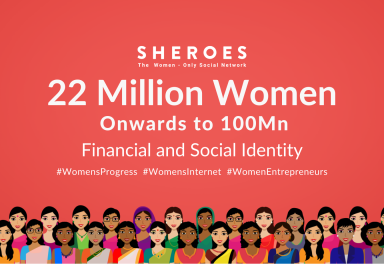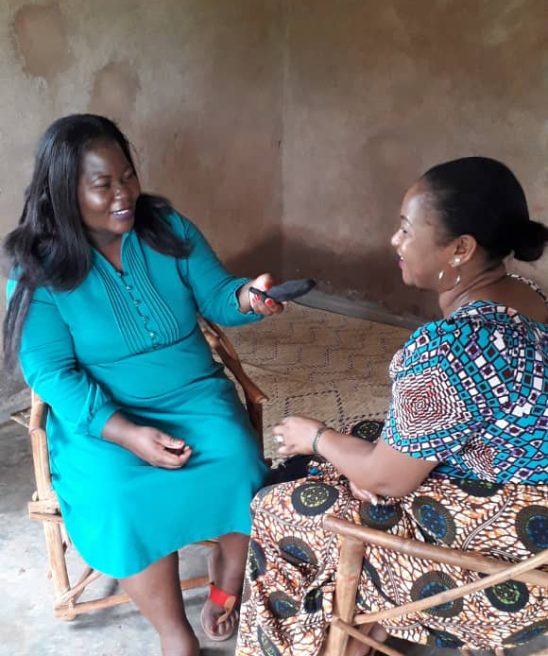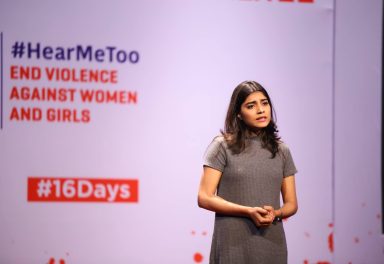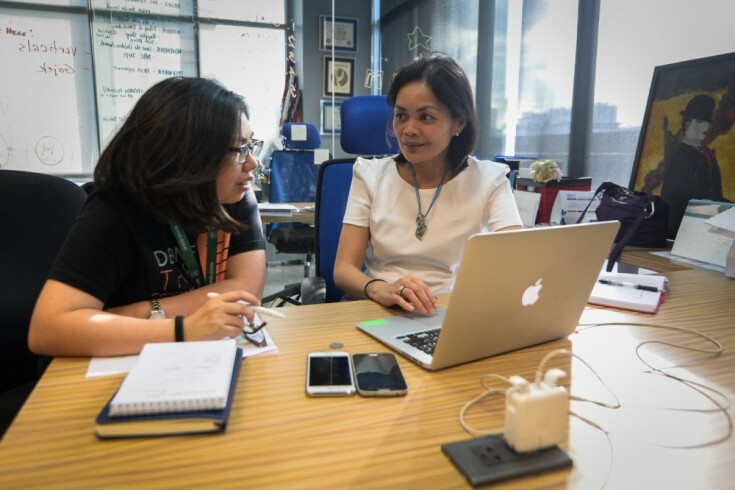By Magdalena Skrzypek, Impact and Communications Manager
International Women’s Day seems like a fitting time to discuss the relationship between gender and media business performance and to highlight media innovations from around the world that champion women. MDIF’s 25 years of experience in supporting independent media shows us that a women-focused approach in areas such as content strategy, audience engagement, revenue management and product design can pay dividends for media business development. Our aim is not to justify media initiatives that are geared towards women on the basis of financial benefits, but rather to strengthen the message that putting women in focus is important for building stronger and better news organisations.
Women as a primary target
Women are less likely than men to say they are interested in news, reportedly have fewer media subscriptions and allegedly churn more frequently than men. One highly cited reason for this apparent disengagement is the fact that women and their unique perspectives are missing from media coverage. In fact, women represent only 25% of people seen, heard or read about in news coverage, and are less likely to think they are covered fairly in the media. 91% of women also feel misunderstood by marketers, despite being responsible for the majority of purchases within households and representing a growth market twice as big as China and India combined.

This grim reality provides an opportunity for the growing number of media companies which primarily serve women. Making up half of the world’s population, women and girls are an important, yet often underserved, demographic offering a potential market for audience growth and a valuable consumer group for businesses and brands which want to market to them.
For example, in South Africa, online platform gsport4girls is the only 24/7 provider of women’s sports coverage in the country, seeking to address the gender gap in sports media. In Indonesia, feminist publication Magdalene.co offers alternative perspectives, particularly on gender equality and the rights of women and minorities. In India, SHEROES, a women’s community platform, gives access to information, expert advice, a counselling chat helpline and social commerce opportunities. All three outlets target women and adolescent girls in particular and create an open space for underrepresented topics and voices.
Serving the female audience
A women-centric approach applies beyond niche publishers, with many traditional legacy and online media, both mainstream and specialised, launching editorial products and initiatives that put women and their needs at the centre. For instance, in the Philippines, podcast production company PumaPodcast runs “Go Hard Girls”, the first podcast dedicated to the stories of Filipina athletes. In India, Gram Vaani, a community media organisation, created “Meri Awaz Meri Pehchan” (“My Voice My Identity”), a voice-based media platform for women in rural India. In Poland, Agora’s Gazeta Wyborcza, a leading Polish daily newspaper and news portal, turned “Wysokie Obcasy” (“High Heels”), its Saturday supplement for women, into a standalone monthly magazine and website for women.
There has also been a growing effort to produce more diverse content that better reflects society and ensures better representation of women in the news. Aimed at achieving a fair balance of male and female voices, the BBC 50:50 Equality Project has spread to 690 teams taking part internally and 121 partner organisations across 26 countries. Meanwhile in Poland, Agora spearheaded an initiative called NewsMavens, giving voice to women editors to create a daily news roundup about what’s most important in Europe from a woman’s perspective. In South Africa, QuoteThisWoman+ (QW+) built a database of female experts in different fields that gives mainstream media easy access to women specialists to interview and quote. A similar directory focused on Latin American women experts in different fields was created by Ecuador’s digital news site GK.
Diversity within newsrooms and leadership
Yet gender considerations in media go far beyond women-focused publications and products, in particular in regard to gender equality in the media workforce. Even though four out of five media leaders think they are doing a good job with gender diversity, the news media industry is still male-dominated and there’s still a long way to go to achieve equality.

According to one research, women constitute 36% of all reporters, 27% of the top management and 41% of the newsgathering, editing and writing senior professionals. According to another, women make up 23% of the top editors, while on average, 40% of journalists are women. Among MDIF clients, that number stands at 45% for all female workers, 45% for management and 35% for female newsroom leadership. In our 25 years of operation, we have worked with numerous women-owned and women-run news businesses, including, among many, Kosovo’s leading independent broadcaster RTV21, Peru’s regional news outlet El Búho and Media Alternativa’s TV channel in Moldova TV8.
Inclusivity within organisational structure can boost innovation and team performance as well as improve decision-making and employee satisfaction. There are also reports that diversity and inclusion in the workplace could make businesses more profitable. Within the media industry, diversity holds even more promise for performance and operations. Balanced newsrooms can help build audience trust and improve the journalistic product by making it more inclusive.
Gender and reader revenue
Diversity and inclusion also play a role in an audience-driven world and publishers’ reader revenue strategies. Gender balance can improve successful conversions, increase audience engagement, particularly among women, and anecdotally has led to growth in the number of subscribers, listeners or open rates for newsletters. In particular, younger audiences do not respond well to under-representation and pay closer attention to coverage that speaks to them and their core values. For example, the BBC 50:50 Equality Project aimed to increase the representation of women on air and made the content more enjoyable to young audiences and increased media consumption among young women.
Shared values, such as respect for women’s rights, can also be used as a trigger to attract new readers and draw in new digital subscribers. For example, after the law on abortion was tightened in Poland and massive demonstrations ensued across the country, Agora’s Gazeta Wyborcza created a subscription campaign built around the protest. Each time someone bought a new subscription, Wyborcza donated all the money to the National Women’s Strike movement. In just one week, they had gained 10,000 new subscribers and collected $180,000. After 10 months, the company had 36% of new subscribers still active on their website.
Whether its membership or subscription, gender can be an important aspect of audience segmentation too, with some topics for which women tend to over-index or under-index. But strategies focused on traditional demographic information, like gender, are far too broad to define audience, and can end up marginalising women or even magnifying gender stereotypes. More specific qualitative information can be more telling: passion points and interests can help tailor the content and formats to the specific needs and interests of the target segment, while data about customer behaviour and specific triggers can help optimise the purchase funnel.
Gender-based harassment
It’s impossible to talk about women in news without addressing gender-based violence. On average, 40% of women media professionals report experiencing sexual harassment of some kind in the workplace. The problem is particularly prevalent online, with 73% of women journalists said to face online violence in the course of their work. But in addition to the personal and professional impact on the individual media workers, online violence can also damage an outlet’s online communities, and thus significantly impact its audience engagement strategies.
An example is Philippine news site Rappler, which initially embraced social media, but later saw it weaponised, with its female staff and management hit the hardest. An analysis of 9,433 comments posted on the professional Facebook page of Maria Ressa, its founder and CEO, revealed that for every supportive comment, there were about 14 comments attacking her. As attacks grew, Rappler made significant changes to its audience-led business model, refocusing its audience engagement efforts away from social media. The outlet innovates around community building, including through its new platform Lighthouse, its civic engagement arm MovePH and activism campaigns, such as #HoldtheLine or offline events and their webinar series. Those actions create safer and more meaningful opportunities for direct engagement with audiences, but also support the company’s revenue stream from its membership programme.
Partnerships and institutional funding
Gender can also play an important role in building institutional revenue. Grant funding, sponsored content and partnerships with foundations and other non-profit organisations, can have a particular focus on gender, such as promoting equality, women’s rights and the empowerment of women and girls.

For example, Ecuador’s GK and its arm for branded content, GK Studio, created a multimedia project about women and climate change in a desert in Ecuador sponsored by SDG Fund in Latin America and produced content for UNFPA’s campaign on sexual and reproductive rights of women with disabilities in Ecuador. During the 2019 elections in Malawi, Capital Radio produced a series of radio documentary-style programmes in partnership with Hivos, which promoted the advancement of women to more senior-level leadership positions within the government. Similarly, last year, Peruvian regional outlet El Búho delivered extensive reporting with the support of the IWMF Howard G. Buffett Fund, which was focused on female political participation in 2021 general elections, disappeared girls and women, and other women-focused reporting.
Branded content revenue
Sponsored and branded content is becoming an important revenue stream for many media businesses, whether it is marketing-with-a-social-cause, including around the topic of diversity and inclusion, or marketing products directed at women. There is a great advantage for brands to work with socially-minded media because they can market high-quality, engaging content that doesn’t feel intrusive, and have distribution channels with targeted audiences, either female or that care about the subject of women empowerment.
For example, in India, women-only social network SHEROES offers brand solutions for companies looking to engage with its online community of women through its accredited brand profile known as a Champion profile. In the Philippines, BrandRap, the sales and marketing department of digital news site Rappler, was the digital partner of an award winning Pantene’s #WhipIt campaign that criticised gender double standards and highlighted women who challenge the status quo. In Argentina, digital outlet Red/Acción and its content studio for conscious brands Fibra launched Mujeres + Mujeres project, an alliance with Facebook Argentina to make visible the work of women entrepreneurs who made a change in their profession and created content for a software development company around issues of social responsibility, diversity and inclusion.
Gender and events business
Events, an important tool in engaging communities and facilitating critical conversations around gender and women’s issues, are another important revenue source for media companies. Advertisers who turn down pitch sales for web or print ads are frequently keen to participate in event sponsorships, as this offers them an opportunity to create meaningful conversation and connection with the audience.

In South Africa, where August is Women’s Month, investigative weekly newspaper and website the Mail & Guardian, hosts the MG Power of Women event that showcases extraordinary women leading change across the country, while the online platform gsport4girls is known for its annual gsport Awards that celebrate the successes of women in sport in South Africa and beyond. In both cases, the events are supported by various sponsors and partners who support the organisations and their cause. In India, Josh Talks joined with Girl Up to organise an event celebrating the achievements and records of Indian women on the International Day of the Girl, and with UN Women to host an event focused on finding solutions to end violence against women and girls. In Indonesia, Katadata, a digital media focused on economic and business news and data analysis, organised a conference focused on gender equality and women’s economic empowerment, with the support of Investing in Women (IW), an initiative of the Australian Government.
Collaboration around gender topics
Another crucial movement in journalism over the past few years has been the rise of collaborative projects organised around different topics, including gender and diversity issues. Although closely tied to editorial and mostly focused on shared reporting and distribution, collaborations are frequently facilitated by foundation funding. They also support brand positioning and brand recognition through amplifying other outlets’ work and allow to build long-term relationships of trust with other media that can be leveraged to better serve everyone’s communities.

For example, transnational media alliance “Red de Periodismo Humano” (“Human Journalism Network”), involving Chile’s Mi Voz, Argentina’s Red/Acción, Ecuador’s GK and 5 other Latin American media outlets, aims at amplifying the reach of their human journalism stories that cross borders and address common challenges, including reporting on gender equality and social inclusion. GK, along with six other media outlets, was also part of a collaboration “Ser Niña en América Latina” (“Being a Girl in Latin America”), a regional effort to expose and denounce inequality and gender violence across the continent through insightful reporting. Another recent collaborative editorial project, “Cicatrices de la pandemia” (“Scars from the pandemic”), including Argentina’s Red/Acción, explored how the Coronavirus crisis in Latin America has affected middle class women in particular, while GK a created a documentary focused on women searching for bodies of loved ones who passed away due to Covid-19, in partnership with El País and Pulitzer Center.
A way forward
Female-focus is important for building stronger news organisations that better engage and serve their audiences on the path towards a more diverse future. As these case study examples of news innovators from around the world suggest, there are a number of promising routes that pave the way for more inclusive media. The consideration of women and issues relating to women in building content strategy, audience engagement, revenue management or product design are just some of the ways media can commit to gender equality and lead an organisational push that goes beyond International Women’s Day.
